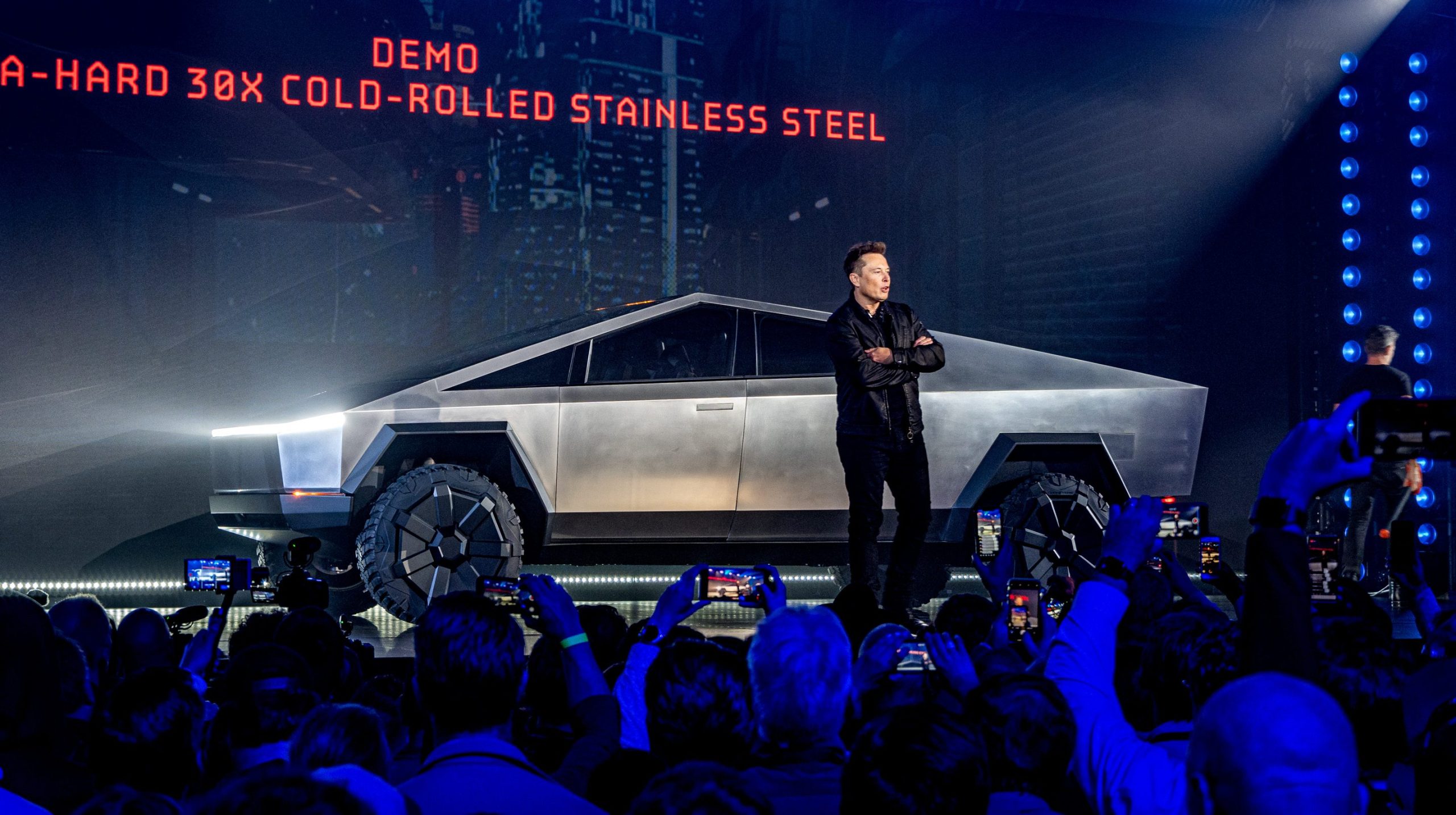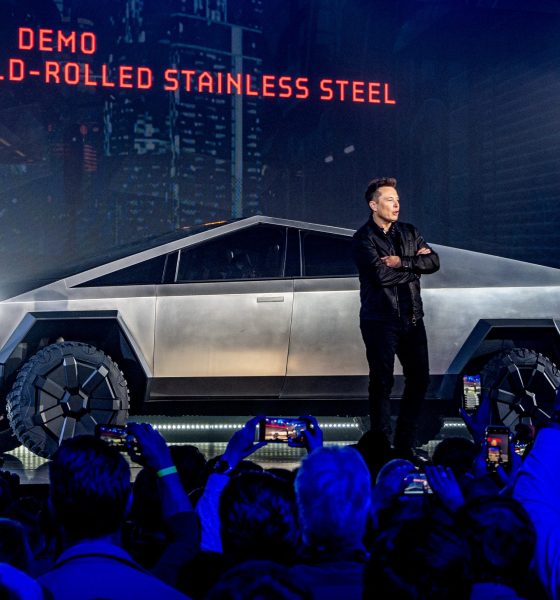

News
EXCLUSIVE: Tesla Cybertruck battery packs to be built at Fremont Factory
Tesla plans to start building battery packs for the upcoming Cybertruck on a new cell manufacturing line in the Fremont factory, people with knowledge of the project told Teslarati.
In August, we reported that Tesla had filed to build a new battery manufacturing equipment line on the second floor of the Fremont factory. This filing, which was submitted to the City of Fremont on August 30, relates to the module portion of the line, Tesla said.
Tesla described the project as “CTA Battery B-Build,” the filing shows.
Credit: City of Fremont
Tesla is ultimately planning to build the Cybertruck in Austin at Gigafactory Texas. However, battery cells and cell pack manufacturing are not yet ready to take off at the new Tesla plant, which is located just outside Austin. Tesla applied to build a battery and cathode manufacturing building at Gigafactory Texas earlier this year, and while the project has been started, it likely will not be ready for the Cybertruck’s projected launch in mid-2023.
With an extensive order log that features over 1 million total reservations, Tesla is preparing for Cybertruck manufacturing by building the battery packs at a plant that is already operational. The Fremont facility, the only Tesla plant manufacturing all four vehicles the company builds, was ultimately chosen for the task of kicking off Cybertruck pack manufacturing, Teslarati confirmed with sources familiar with the matter.
Cybertruck Battery Pack Manufacturing will start in Fremont
Sources familiar with the matter told Teslarati the second-floor manufacturing line that Tesla filed to build in August will manufacture the Cybertruck packs. Tesla will take the 4680 battery cells produced at the Kato Road facility or another previously utilized cell design manufactured at Gigafactory Nevada and put them into modules and packs that are manufactured on the new Fremont battery line.
Currently, the line is being completed by construction crews on site, who are making daily progress. Additionally, Tesla engineers are installing automation equipment to produce the Cybertruck battery packs.
Tesla did not immediately respond to our request for comment.
Kicking Cybertruck Module Production into “Plaid Mode”
Tesla is also working hard to kick off Cybertruck pack production as time is extremely limited. Tesla has a series of vehicles, referred to as “carriers,” which transport batteries throughout the factory. The company recently ordered around 300 new carriers for the factory as cell and battery pack manufacturing is set to ramp drastically.
The sources also said the Cybertruck battery pack line is currently being tested with Tesla’s automation equipment. Tesla is working to ramp the line quickly as Cybertruck vehicle manufacturing is planned for next year at Gigafactory Texas.
2023: The Year of the Tesla Cybertruck?
Tesla is set to build the Cybertruck at Gigafactory Texas. After unveiling the all-electric pickup in 2019, Tesla has delayed initial production on several occasions due to supply chain issues and other challenges.
“In 2022, supply chain will continue to be the fundamental limiter of output across all factories,” Musk said during Tesla’s Q4 and 2021 Full Year Earnings Call in January. So the chip shortage, while better than last year, is still an issue. And, yeah, so that’s — there are multiple supply chain challenges.”
Musk went on to say that the challenges would delay the launch of any new products in 2022. “We will, however, do a lot of engineering and tooling, what not to create those vehicles: Cybertruck, Semi, Roadster, Optimus, and be ready to bring those to production hopefully next year. That is most likely.”
Although Tesla is planning to begin deliveries of the Semi on December 1, all other projects have been effectively delayed until next year, but preparation to launch those projects is evidently a priority within the factories.
4680 cells are not constrained but are they going into the Cybertruck?
Tesla’s Vice President of Powertrain Drew Baglino detailed earlier this year that the company was not constrained in terms of 4680 battery cell availability.
“So throughout 2021, we focused on growing cell supply alongside our in-house 4680 effort to provide us flexibility and insurance as we attempt to grow as fast as possible,” Baglino said on the Q4 and Full Year 2021 Earnings Call in January. “4680 cells are not a constraint to our 2022 volume plans based on the information we have.”
What Baglino said next on the call likely indicates what Tesla was preparing the Cybertruck for: pack manufacturing at Fremont, shipping the packs to Texas, and then installing them into vehicles:
“But we are making meaningful progress of the ramp curve in Kato. We’re building 4680 structural packs every day, which are being assembled into vehicles in Texas. I was driving one yesterday and the day before. And we believe our first 4680 vehicles will be delivered this quarter.”
The Kato Road facility has supported Tesla’s 4680 cell needs thus far. The 4680 packs were installed on some Gigafactory Texas-built Model Ys, and were reviewed by Munro Live earlier this year. Fremont will likely support Cybertruck pack manufacturing for some time, utilizing cells from Kato Road and from suppliers like Panasonic when they ultimately being manufacturing the battery for Tesla.
As Cybertruck manufacturing ramps up into late 2023, 2024, and beyond, packs will then be at Fremont and Gigafactory Texas, which would likely entirely support Cybertruck production.
I’d love to hear from you! If you have any comments, concerns, or questions, please email me at joey@teslarati.com. You can also reach me on Twitter @KlenderJoey, or if you have news tips, you can email us at tips@teslarati.com.

News
Tesla FSD fleet is nearing 7 billion total miles, including 2.5 billion city miles
As can be seen on Tesla’s official FSD webpage, vehicles equipped with the system have now navigated over 6.99 billion miles.

Tesla’s Full Self-Driving (Supervised) fleet is closing in on almost 7 billion total miles driven, as per data posted by the company on its official FSD webpage.
These figures hint at the massive scale of data fueling Tesla’s rapid FSD improvements, which have been quite notable as of late.
FSD mileage milestones
As can be seen on Tesla’s official FSD webpage, vehicles equipped with the system have now navigated over 6.99 billion miles. Tesla owner and avid FSD tester Whole Mars Catalog also shared a screenshot indicating that from the nearly 7 billion miles traveled by the FSD fleet, more than 2.5 billion miles were driven inside cities.
City miles are particularly valuable for complex urban scenarios like unprotected turns, pedestrian interactions, and traffic lights. This is also the difference-maker for FSD, as only complex solutions, such as Waymo’s self-driving taxis, operate similarly on inner-city streets. And even then, incidents such as the San Francisco blackouts have proven challenging for sensor-rich vehicles like Waymos.
Tesla’s data edge
Tesla has a number of advantages in the autonomous vehicle sector, one of which is the size of its fleet and the number of vehicles training FSD on real-world roads. Tesla’s nearly 7 billion FSD miles then allow the company to roll out updates that make its vehicles behave like they are being driven by experienced drivers, even if they are operating on their own.
So notable are Tesla’s improvements to FSD that NVIDIA Director of Robotics Jim Fan, after experiencing FSD v14, noted that the system is the first AI that passes what he described as a “Physical Turing Test.”
“Despite knowing exactly how robot learning works, I still find it magical watching the steering wheel turn by itself. First it feels surreal, next it becomes routine. Then, like the smartphone, taking it away actively hurts. This is how humanity gets rewired and glued to god-like technologies,” Fan wrote in a post on X.
News
Tesla starts showing how FSD will change lives in Europe
Local officials tested the system on narrow country roads and were impressed by FSD’s smooth, human-like driving, with some calling the service a game-changer for everyday life in areas that are far from urban centers.

Tesla has launched Europe’s first public shuttle service using Full Self-Driving (Supervised) in the rural Eifelkreis Bitburg-Prüm region of Germany, demonstrating how the technology can restore independence and mobility for people who struggle with limited transport options.
Local officials tested the system on narrow country roads and were impressed by FSD’s smooth, human-like driving, with some calling the service a game-changer for everyday life in areas that are far from urban centers.
Officials see real impact on rural residents
Arzfeld Mayor Johannes Kuhl and District Administrator Andreas Kruppert personally tested the Tesla shuttle service. This allowed them to see just how well FSD navigated winding lanes and rural roads confidently. Kruppert said, “Autonomous driving sounds like science fiction to many, but we simply see here that it works totally well in rural regions too.” Kuhl, for his part, also noted that FSD “feels like a very experienced driver.”
The pilot complements the area’s “Citizen Bus” program, which provides on-demand rides for elderly residents who can no longer drive themselves. Tesla Europe shared a video of a demonstration of the service, highlighting how FSD gives people their freedom back, even in places where public transport is not as prevalent.
What the Ministry for Economic Affairs and Transport says
Rhineland-Palatinate’s Minister Daniela Schmitt supported the project, praising the collaboration that made this “first of its kind in Europe” possible. As per the ministry, the rural rollout for the service shows FSD’s potential beyond major cities, and it delivers tangible benefits like grocery runs, doctor visits, and social connections for isolated residents.
“Reliable and flexible mobility is especially vital in rural areas. With the launch of a shuttle service using self-driving vehicles (FSD supervised) by Tesla in the Eifelkreis Bitburg-Prüm, an innovative pilot project is now getting underway that complements local community bus services. It is the first project of its kind in Europe.
“The result is a real gain for rural mobility: greater accessibility, more flexibility and tangible benefits for everyday life. A strong signal for innovation, cooperation and future-oriented mobility beyond urban centers,” the ministry wrote in a LinkedIn post.
News
Tesla China quietly posts Robotaxi-related job listing
Tesla China is currently seeking a Low Voltage Electrical Engineer to work on circuit board design for the company’s autonomous vehicles.

Tesla has posted a new job listing in Shanghai explicitly tied to its Robotaxi program, fueling speculation that the company is preparing to launch its dedicated autonomous ride-hailing service in China.
As noted in the listing, Tesla China is currently seeking a Low Voltage Electrical Engineer to work on circuit board design for the company’s autonomous vehicles.
Robotaxi-specific role
The listing, which was shared on social media platform X by industry watcher @tslaming, suggested that Tesla China is looking to fill the role urgently. The job listing itself specifically mentions that the person hired for the role will be working on the Low Voltage Hardware team, which would design the circuit boards that would serve as the nervous system of the Robotaxi.
Key tasks for the role, as indicated in the job listing, include collaboration with PCB layout, firmware, mechanical, program management, and validation teams, among other responsibilities. The role is based in Shanghai.
China Robotaxi launch
China represents a massive potential market for robotaxis, with its dense urban centers and supportive policies in select cities. Tesla has limited permission to roll out FSD in the country, though despite this, its vehicles have been hailed as among the best in the market when it comes to autonomous features. So far, at least, it appears that China supports Tesla’s FSD and Robotaxi rollout.
This was hinted at in November, when Tesla brought the Cybercab to the 8th China International Import Expo (CIIE) in Shanghai, marking the first time that the autonomous two-seater was brought to the Asia-Pacific region. The vehicle, despite not having a release date in China, received a significant amount of interest among the event’s attendees.








